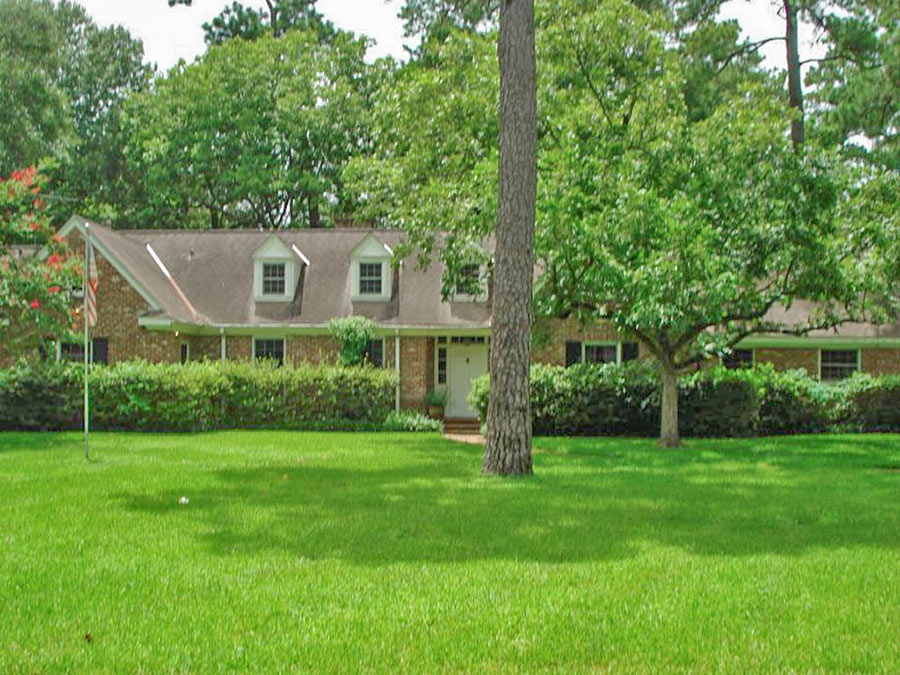COMMENT OF THE DAY: MAKING HOUSTON HISTORY “that IS history, and a culture. it may not work in most parts, but some people see it as a progressive sign that we are not willing to be bound to what worked 100, 50, and sometimes 20 years ago . . . that in Houston, if it ain’t perfect or up to snuff, knock it down and make it so.” [HTX REZ, commenting on Daily Demolition Report: The Best a Demo Can Get]




Well, if you consider townhouses built on cheap balloon frames with a life expectancy of 50 years “perfect.” Your logic could be used to justify tearing down anything historic. Culture?
The vast majority of structures have life expectancies well below 50 years. It takes exceptional design to exceed that from the outset. But that is an appraisal term, and you don’t understand what it means.
Say that a structure is built in 2000 and has a life expectancy of 45 years. Say that nothing (at all!) is done to it for 30 years, and then its roof is replaced. The “effective age” will change from 30 years to, say 20 years. Follow that up with a total remodel, and in 2030 that home will have an effective age of, say 5 years, along with a slight downward adjustment in value for functional obsolescence. That’s all. The term is not nearly as final is its connotation suggests.
for Mike above (I wrote original)
That’s my entire point. There is rarely, if ever, anything perfect. Buildings are simply a snapshot of their times, and are quite often functionally obselecent in some amount of time. Either from true deferred maintenance, or in their design, style, and useful life.
I don’t think for a second the townhouse crazy of the past 15 years (and more to come) is by any means perfect, but it’s the EXACT same thing they did in the NE cities 150 years ago. Manhattan even, had houses on lots originally. They were torn down, re-platted with townhouses, and sometimes 100 years ago, torn down again wand replaced with mid to high rise buildings.
I personally love to travel to Boston, NY and see all of the old gothic and beaux arts stuff, it’s very pretty. I’m also very aware that those Beacon Hill “mansions” in Boston have tiny bathrooms, no real natural closet space, and were created so the kitchen was a hidden afterthought, not a feature of the house to be shared with other living spaces.
John Kerry lives in one of these…probably $25MM in price. This is an extreme example, but for more modest folks they would love to have the lattitude to continually be re-inventing the neighborhoods they love with equally rewarding home lives.
Nobody likes a 2.5×2.5′ shower, with a toilet immediately adjacent to it.
Yes, the fifty year life expectancy is ambiguous. Still, heart cypress timber frames > second-growth pine balloon frames. This is a victory for trendiness, not durability, historical value, or architectural uniqueness.
Mike, people don’t visit Rome to see Roman concrete from before the recipe was lost to the dark ages, and they don’t come here to look at old cypress wood. A sturdy but invisible building material to which professionals and consumers are oblivious does not contribute to a city’s cultural heritage. It makes good trivia, and that is all.
As for this cheap balloon framing you mention, you’re confusing that with stick framing. You’d probably be about as likely to come across balloon framing in one of these crappy old shotguns as you are to find it just once out of a hundred townhomes…and when you do, it’ll be the odd townhome framed with steel.
HTX REZ –
Those townhomes in Boston were built out of much more durable materials (actual brick walls vs. cheap brick-veneered wood frames), and with a much more pleasing aesthetic. If we could get housing stock like that, I probably would trade the shotgun houses!
Niche –
You’re right, I did confuse the older balloon framing with the even cheaper stick framing. As for the shotgun houses, to my knowledge they were timber framed. Whether you think timber framing is crappy I’ll leave to you; most people would prefer it decidedly to stick.